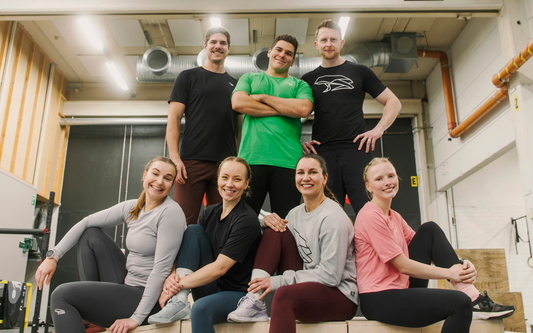All the talk about the climate emergency, global heating, and carbon emissions can easily feel overwhelming. It’s connected in most of the current topics and yet, it is hard to say which actions are really helpful and which ones hardly matter at all.
We tried to make some sense of it and came to the realisation that, after sifting through all the information, the answers are pretty straight forward. There are actions we can take that make a huge difference on a personal level, and there are actions that don’t really matter when it comes to reducing emissions.
The four big areas where we as individuals can make a positive and meaningful impact are:
-
Housing
-
Mobility
-
Consumption of goods & services
-
Food
In the following sections, we have collected clear actions everybody can make on a personal level to reduce their carbon footprint.

Housing
A very effective and small way to reduce your footprint is to turn down the thermostat in the winter. Save 5% energy per every 1C. (1)
On average, a person uses between 100 and 120 litres of water per day. The most energy goes to warming up water. Check the water taps and be conscious about your habits while using hot water. (2)
If you own a house or an apartment, you can go even further and be active in finding ways to improve the energy efficiency of the building. (1,2)
Call-to-action:
-
How much space do you need?
-
Can you lower the room temperature?
-
How is your warm water consumption?
-
Wash machine
-
Dishwasher
-
Shower or bath
-
Can you find ways to affect the energy efficiency of the house or building?

Mobility
We in the western world are used to moving a lot by car and aeroplane. Personal vehicles are responsible for 74% of all travel emissions (1). Travelling by plane increases the most of a person's carbon footprint and it can easily cause more emissions than all the other areas together (2).
90% of goods travel by cargo ships, which is the most efficient way when we consider the carbon footprint of freight logistics. It’s actually the “last mile” of goods transportation that produces by percentage the most emissions. (2) It matters whether you walk or drive; if you must go by car, try to buy food once for the whole week.
Ranking (2):
-
Walk or cycle
-
Train & tram
-
Bus
-
Electric car
-
Combustion engine car
-
Cargo ship
-
Aeroplane
-
Cruise ship
Call-to-action (1,2):
-
Walk or cycle short trips
-
Use public transport
-
Use a shared car or low-emissions vehicle
-
Consider an electric car or biofuel
-
Enjoy nearby activities and destinations for holidays
-
Compensate your flight(s)
-
Gold Standard Certificated
-
VCS Standard Certificated

Consumption & goods
60-70% of greenhouse gas emissions come from consumption. The best prevention is to be suspicious towards any new stuff you feel like purchasing. (2)
Call-to-actions (1):
-
Buy less but higher quality
-
Fix, repair & extend the lifespan of an item
-
Rest & share goods
-
Look & ask for labels and/or transparency
A helpful checklist for your next purchasing decision:
-
Do I really need this?
-
How long do I need the item?
-
Can I rent or borrow the item?
-
Can I buy second hand?
-
If I buy new, how long does the item last in use?
-
Are there more durable options?
-
Are there more sustainably-made options?
-
When I don’t need the item anymore, how can I recycle it?

Food
In Finland, the carbon footprint of food is 1.8 tonnes CO2e per capita. People who choose a vegan diet reduce their emissions regarding food to 0.7 tonnes CO2e. (1)
The carbon footprint of food consists of production, processing, transportation, packaging, sales, transportation to home, cooking, and waste. Packaging adds surprisingly little to the overall emissions. In fact, the right packaging means less waste because the food survives longer without spoiling. (2)
Reducing food waste is one of the most effective ways to reduce emissions. Annually, each person on average wastes 20-25kg of edible food. (2)
During the 1960s and 1970s, an average Finn used to eat 10kg of cheese per year and 60-70kg of meat per year. Now, a person eats on average 20kg cheese and over 80kg of meat annually. (2)
Call-to-actions (1):
-
Buy only what you use & eat
-
Choose near-end-of-date products (otherwise it is likely to become waste)
-
Favour plant-based proteins, vegetables & sustainably-sourced fish
-
Decrease meat & dairy
-
Avoid foods transported by air
-
Avoid foods grown in heated greenhouses
If you want to reduce your emissions by half, ie 0.9 tonnes CO2e, the next check-list is for you.
Halving carbon footprint of food (1):
-
Cut ruminant meat (beef, lamb, venison)
-
Cut greenhouse gas-intensive vegetables
-
Half your average dairy, poultry & fish consumption
-
Replace red meat & hard cheese with poultry, fish, pork, soft cheese and vegetarian protein sources like soy, beans & lentils
-
Favour seasonal vegetables & fruits (not air transported)
-
NOTE: Long transportation distance does not necessarily mean transport by air
-
Ask for carbon labels in food items
We hope with the above tips I this article you gained some new information and especially some clarity. In the end, we all need to do something and that is probably the hardest thing to accept. Of course, it would be easier to continue living as we already do.
We are very confident seeing the change as a huge opportunity to have a more balanced life in general. As in business, we believe in taking one step after another in preventing global heating as well. What is the most comfortable way for you to start today? There’s no time like the present!
Love,
Ama & Essi
Edited by Alex Burchell
Photos by Julius Töyrylä

-
Finnish Environment Institute Sitra 2017: Consumption choices to decrease personal carbon footprints of Finns https://media.sitra.fi/2017/10/23144245/Consumption_choices_to_decrease_personal_carbon_footprints_of_Finns.pdf
-
Rinna Saramäki: 250 ilmastotekoa joilla pelastat maailman. Otava. 2019.




